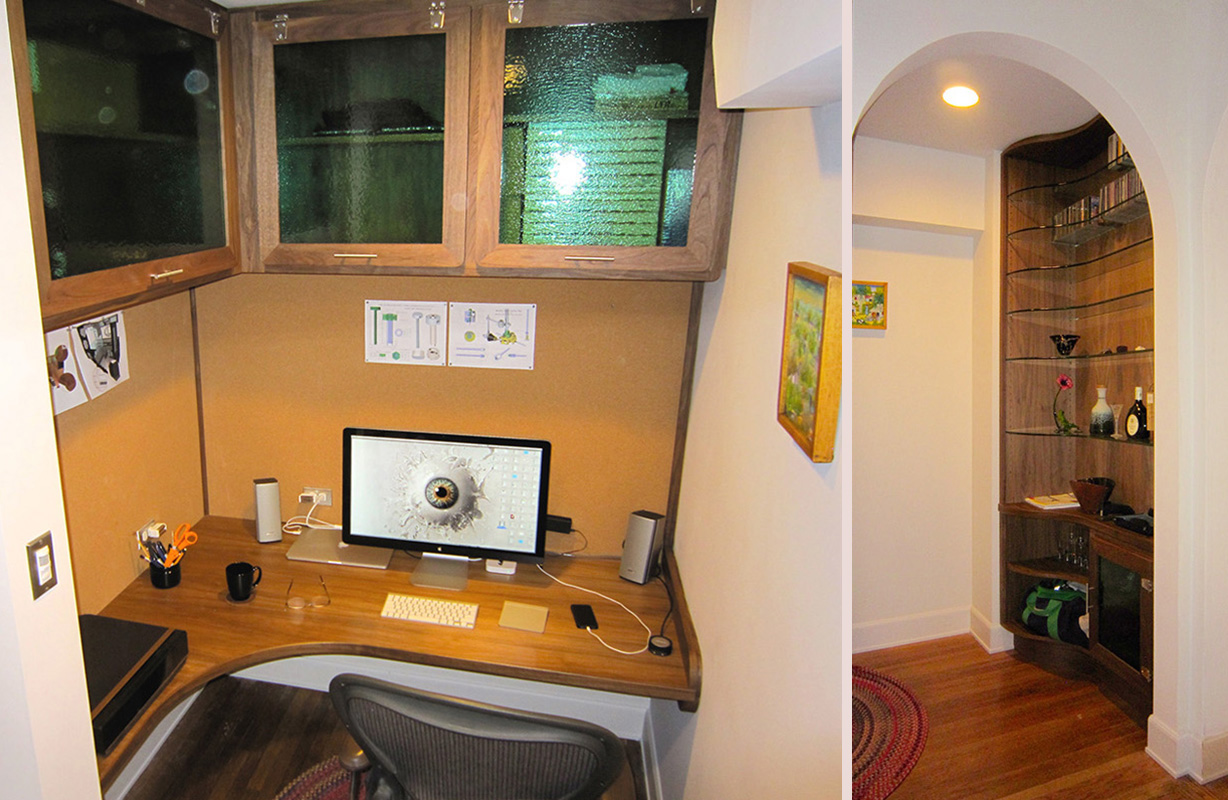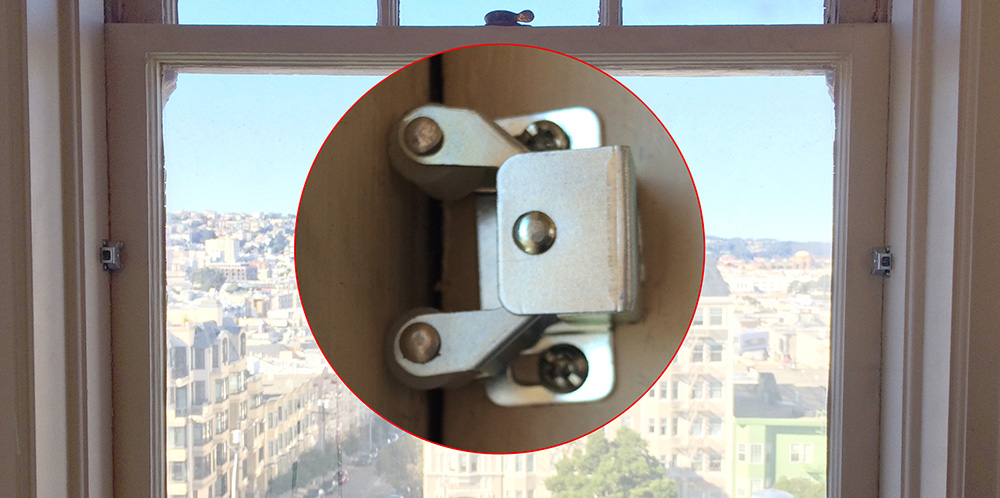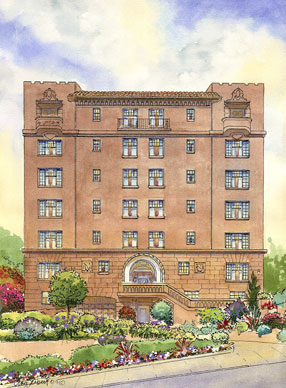My Upgrades Redstone apartments were designed with large closets configured as wardrobe-dressing rooms. I had used mine, in unit 404, as a utility room but then saw that the space could be made into an excellent home office, well-integrated with the rest of the apartment.  I widened the door opening, replacing the door frame with a Spanish Mediterranean style arch, thereby making the space feel more open from inside and room-like from outside. I designed a shelf unit, desk, and cabinets for functionality, and to fit the space precisely. The walls were not as flat and square as in my CAD drawing, so I had Aaron Gordon Construction build new ones and add motion-controlled LED lighting and utility outlets. Ken Seidman and Felipe Nieto of Seidman Woodworks then built the cabinetry from black walnut, with textured glass, cork, and stainless steel marine hardware. They did beautiful work!  General Upgrades For Individual Units The Redstone has 1-pipe steam heat: it's great if you know how to use it, but not so great if you don't. Each radiator has a steam valve on one side, and an air vent on the other. The boiler (in the basement) produces steam on a cycle of about an hour. When a cycle begins, with the valve open, steam enters the radiator, pushing cool air out through the vent (you may hear hissing). When the hot steam reaches the temperature-sensitive vent, the vent snaps shut (you may hear a click), preventing air or steam from exiting, and so, blocking more steam from flowing into the radiator. Some minutes later the boiler stops producing steam (until the start of its next cycle) and as the radiator gives up its heat to the room, the steam inside condenses to water and drains back to the boiler, through the same pipe the steam came up in.  The steam valve cannot be used to regulate temperature: it must be kept either full-open (CCW) or full-closed (CW). If you try to regulate temperature by opening it "just a bit", condensed water will be unable to drain back to the boiler, will fill the radiator, pour out of the air vent, and cause a flood in the apartment below. To regulate temperature, you need to install a thermostatically controlled valve between the radiator and the air vent. When this new valve closes automatically, in response to room temperature, steam is prevented from filling the radiator (like when the air vent snaps shut), which therefore cools down. When the new valve opens, the radiator functions normally. You'll need 3 parts:
I've installed 2 of these systems, and have found them effective and reliable. Air temperature in my apartment is always about right, and I don't have to fool with the steam valves. Over about 10 years, one Danfoss valve failed (stuck open) and needed replacing ($55). Fix Rattling Windows  If your enjoyment of the last violent windstorm was diminished by rattling windows, there is a cheap and easy fix. A $1 piece of cabinet hardware called a "roller catch" or "roller latch" screwed to each side of the window frame, as shown, will allow a window to open and close normally, while preventing it from shaking back and forth. It's easy to conserve electricity used for lighting without constantly flipping switches, but many motion-controlled switches don't work with high-efficiency LED or CFL lights, or are clumsy to use where you sometimes want the lights to stay off even if there's movement, as in a bedroom. Sensor Switch makes wall switches that do all that, with no programming and simple one-button control. You can get their switches from Tom Byrnes Independent Electric Supply in SF. (You may want an electrician's help choosing the correct switch for your wiring). Building Upgrades Laundry The limited capacity of our shared basement laundry facility regularly elicits requests to allow in-unit washer-dryers. But, in-unit dryers would dramatically increase electric power use (they use electricity for heat, whereas our shared dryers use gas), and if several were on simultaneously, we would exceed our PG&E service, and black-out the building. In-unit washers would also stress the building's plumbing, causing fluctuations in water pressure and backed-up drains on lower floors. Finally, if use of our shared laundry were reduced, it might become uneconomical to maintain. Although there is no practical way to upgrade plumbing building-wide, it is possible to upgrade basement plumbing because main drain pipes are nearby, supply pipes are not buried in finished walls, and demolition would be minimally disruptive. I have therefore proposed that we upgrade our shared basement laundry facility. An attractive, high-capacity laundry would serve all residents, and increase building values without risking damage to our infrastructure. Electric Cars
Electric car charging would be a great building upgrade, and would not be difficult to implement:
|

